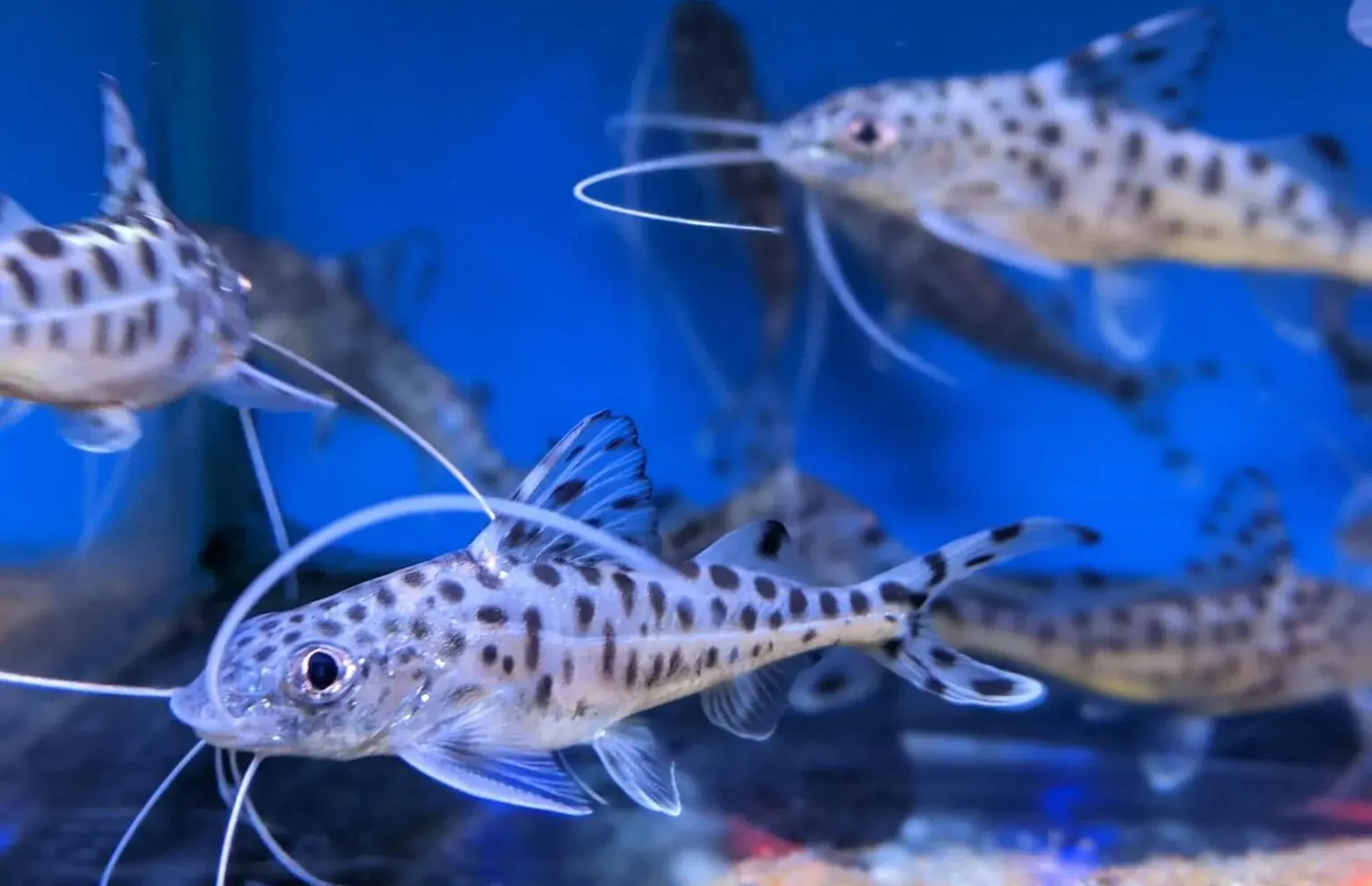The popular marbled catfish scientifically known as Pimelodus pictus originates from the Amazon and Orinoco River basins of Southern America. Pictus catfish is a long-whiskered tropical fish breed that likes to dwell in the warm waters of Brazil, Venezuela, and Columbia. Let’s explore the Pictus catfish care guide.
Relating to the Pimelodidae family, this freshwater dweller has a unique appearance. As the name suggests, it boasts cat-like whiskers. Its “one-of-a-kind” silvery patterned body makes it a freshwater jewel that is well known among the fish-keeping community as the “Painted Catfish” and the “Marbled Catfish”.
This whiskered wonder is a favorite for many aquarists due to its intriguing and peaceful presence in home aquariums. Its distinct physical features make this little-bodied creature “easy to care for” and an enigmatic addition to your home aquariums. Moreover, its long lifespan of about 8 to 10 years makes it an ideal pet, as it can be your better half, longer than other aquarium fish.
To know more about this captivating marbled marvel, Let’s take a deep dive and explore the care guide for Pictus Catfish.
Quick Care Guide
| Minimum Tank Size | 55 to 75 gallons (recommended) |
| Water PH | 6.5 to 7.5 |
| Water Temperature | 75°F – 82°F |
| Care Level | Easy to care |
| Maximum Size | 6 inches |
| Tank Mates | Yes (similar-sized fish are recommended) |
| Diet | Omnivores (primarily algae eaters) |
Pictus Catfish Appearance
what’s the pictus catfish max size ? The Pictus Catfish has an elongated streamlined body of about 5 to 7 inches. The torpedo-shaped physique allows the catfish to swim around with agility in both wild waters and home aquariums. Often seen darting around the fish tank, this majestic marvel is a fast swimmer who likes to play around. The spiny dorsal fin is considered a little venomous and requires some caution while handling. Although its fins aren’t that flashy thanks to them, this fish is fast as a racehorse!
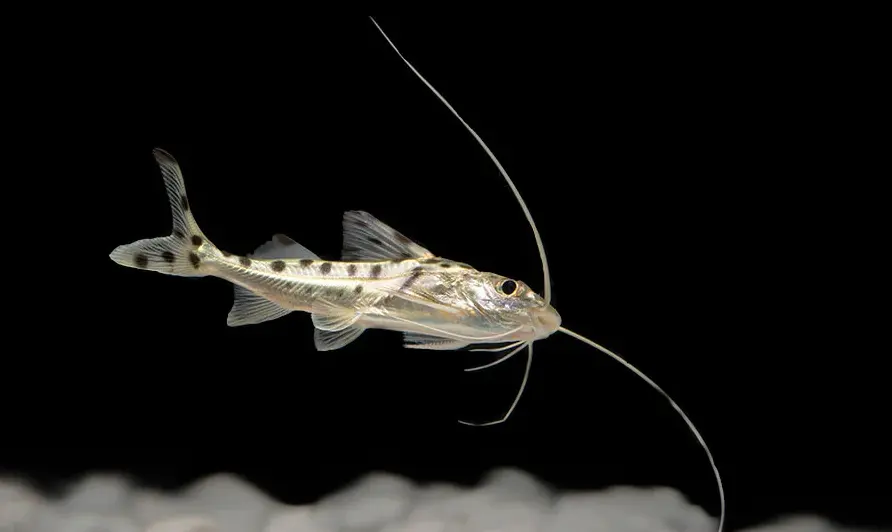
One of its most astonishing features is the eye-catching silvery white or light brown body color. On top of that, seemingly hand-painted black patterns of dots and stripes make this fish more striking to look at. These patterns usually run horizontally across its body but orientation might vary from fish to fish.
Like most catfish, the 4-line catfish also boasts long barbel that look like whiskers. As elegant as it might be, the barbels aren’t just for show! Working as sensory organs, they constantly twitch and help the fish to search for food and navigate in low light. These long whiskers, extending to the tail fin are not just for touch; they can also sense taste!
Cut to: Barbels? No, these are the Pictus’ secret weapon.
Size matters! But the pictus catfish can suffice in this department as well. Looking at the bright side, its size isn’t a problem. Rather the small size of about 5 to 6 inches makes it an ideal tank fish.
Pictus Catfish Natural Habitat
Pictus catfish are accustomed to living in moving freshwaters, especially in the Amazon and Orinoco River basins. It thrives in huge water bodies with powerful currents while easily navigating through them like a knife through butter, all thanks to its agile and streamlined body.
This whiskered wonder likes slightly warm waters of about 73 to 79 degrees Fahrenheit. Dwelling in the depths of the rivers, this fish is a bottom feeder. Its natural habitat includes river beds with various substrates like sand, smooth rocks, and even decaying matter, which they can scavenge for food.

However, bottom-dwelling doesn’t change the fact that this little bandit likes extremely clean and fresh waters. As its natural habitat is located directly in the rainforests that filter out the impurities in the water, this fish must have clean water in its environment.
Moreover, this fish isn’t a solitary fish. It likes to socialize with not just its own species, but also with other fish. Tetras, catfish, and characins are its well-known friends.
Ideal Tank for Pictus Catfish
The four lined Pictus Catfish with its striking beauty adds a touch of intrigue to your aquarium. But it’s always a tit-for-tat! The pictus catfish is a little demanding although it’s not a price compared to its elegance. Here is how you can build your own Pictus Palace.
As this fish is a fast-darting rocket of the waters, it needs space to explore and exercise. The ideal pictus catfish tank size is 55 gallons each, but the more the better. If you plan on adding a friend to the tank, increase about 50 gallons of space per fish. Making sure that there is enough territory will reduce the chances of potential aggression.
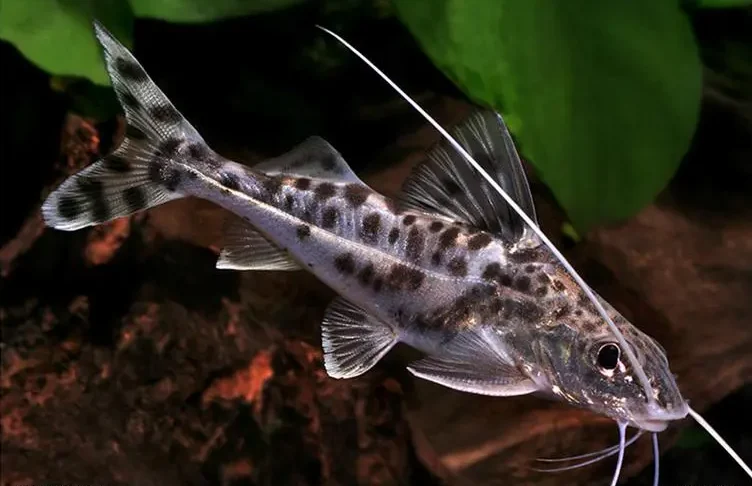
The ideal water temperature is about 73 to 79 degrees Fahrenheit and the pH is 6.0 to 7.5. Keeping the water free of ammonia and nitrite is important. We suggest using a water testing kit. Nitrite levels below 20 ppm are ideal. Mimicking the natural parameters of this fish is crucial for its healthy survival in captivity.
Line the bottom of the tank with a smooth substrate like fine gravel and smooth rocks is a good practice, but make sure the tank bed doesn’t have any sharp or hard objects as it may damage the whiskers of our bottom dwelling friend. Adding natural plants, and driftwood and making a lot of hiding spots for our nocturnal pet will provide it with a playful environment. Due to the Nocturnal nature, we suggest having subdued lighting for the tank.
As we know, our bottom dwellers like to scavenge the bottom of the fish tank, leaving a high amount of organic waste. We suggest investing in a high-quality filter that acts as the purifying trees of Pictus’ natural habitat.
Pictus Catfish Diet
The Pictus Catfish is an Omnivore, meaning it can eat both plants and meat. But due to its small size, its diet must be scaled properly. We suggest providing a mix of different varieties of feed to guarantee the nutrition and health of this little freshwater fishy.
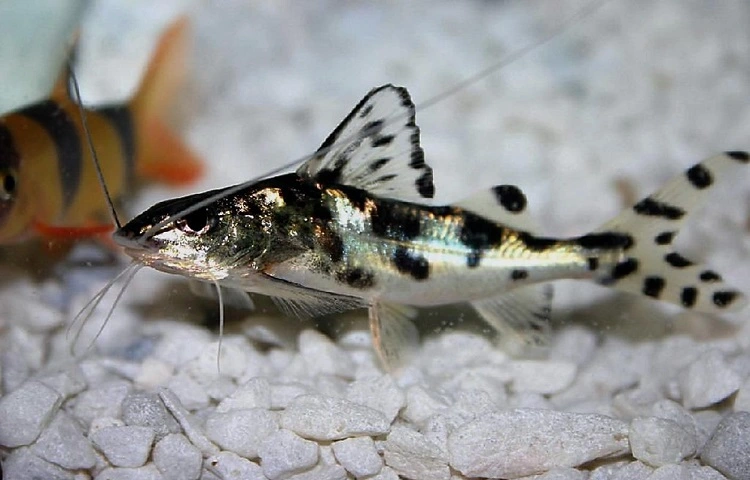
Sinking palettes and flake food can be the base of their diet, providing them with most of the required nutrition. Live and frozen feeds like shrimp and bloodworms can also be given to the fish. Having a shuffled feeding routine can surprise our little friend with new tastes every time.
If you are wondering how often should you feed your fish?
A full grown spotted Raphael catfish must not be fed more than 2 to 3 times a day, keep in mind that this bottom feeder is only 6 inches max and requires only a small amount of food. For this picky eater, it’s a “no-no” for the leftover food. Overfeeding might lead to impurities and contamination of the tank water. The amount of food to be fed can be regulated by observing the feeding habits of the fish.
Due to their bottom-feeding habit and nocturnal nature, they might not compete for food. We suggest feeding them at a time when other tankmates are inactive.
Care Guide for Pictus Catfish
No special diet or complicated hunting techniques are necessary so the diet is not a problem. Moreover, the ideal temperature and pH are usually moderate so no special equipment is required to modify it unless the tank is placed in an extremely hot or cold environment.
The variety of tankmates is not very specific, rather most similar-sized fish are compatible with Pictus Catfish. Although the tank size might be a little extra it’s a small price to pay for such a splash of personality in your aquarium. Its tank Decoration, Water filtration, and substrate require minimal maintenance.

Overall, if a spacious tank with a clean and sufficient water supply is provided, the overall cost and effort for this fish are very minimal. We suggest adding one or two of these whiskered wonders to your aquarium to get a splash of intrigue at minimal cost.
Pictus Catfish Behavior
Pictus catfish is generally a peaceful fish that won’t chase and harm other tankmates. Rather this fish thrives in community tanks and likes to socialize even forming groups. Often schools of 4 to 6 fish have been observed. However, if tankmates are of different sizes, the case could be different.
Are pictus catfish aggressive and harmful to tankmates?
It depends! If tankmates are smaller in size, Pictus catfish could consider them as food and attack them Adding large or aggressive fish to the Pictus’ tank might end up badly as our tiny pictus could be bullied or stressed out. Hence, make sure that tankmates are of similar size.
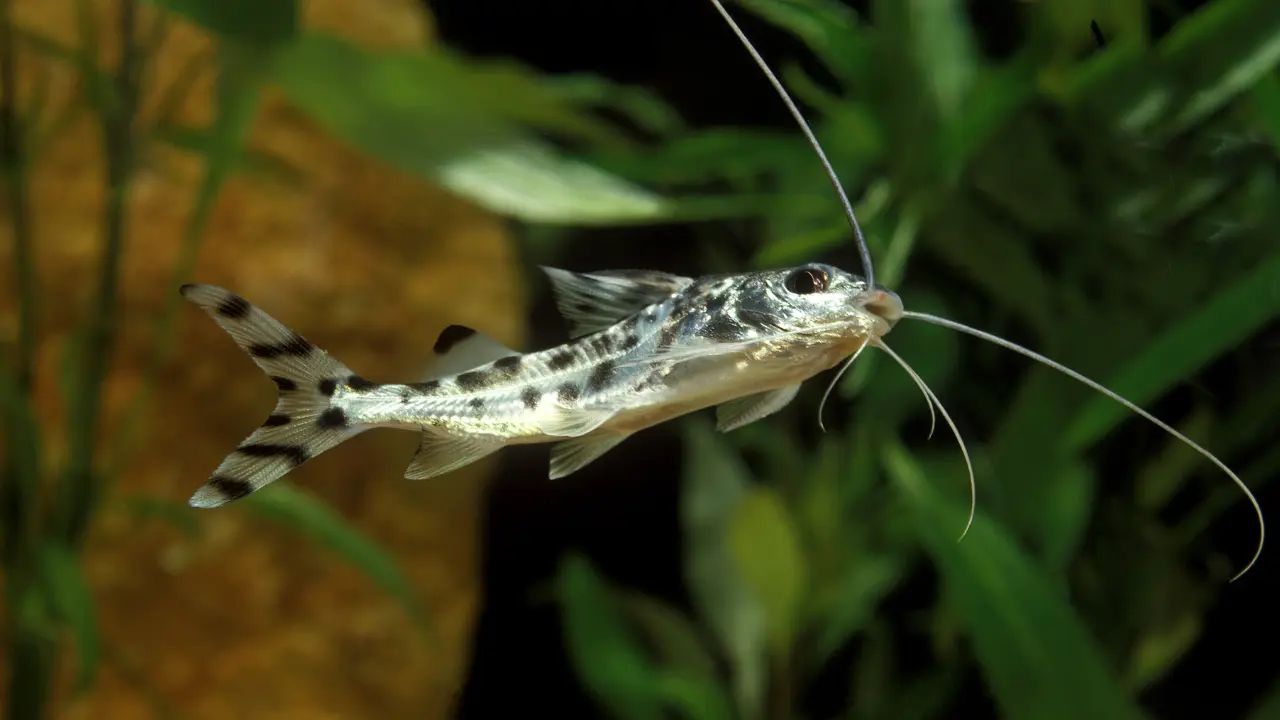
if you’re wondering how to Prevent fights?
The simplest answer is, to have tankmates of the same size so no one’s bullying no one. Some ideal tankmates are as under.
Pictus Catfish Tankmates
Tankmates have the utmost importance in Pictus Catfish Care. These catfish can be shy to timid newcomers, making them a little stressed. We advise to gradually introduce new fish to the aquarium and go easy on both of them.
- Giant danios
- Tetras
- Barbs
- Opaline gourami
- Other small catfish species

The Pictus is a nocturnal hunter. This means that it dwells around the tank in the night while tankmates are resting. While usually patient and peaceful, a hungry enough Pictus Catfish might take a bite or two out of its tankmates.
Breeding Pictus Catfish
The Pictus fish is considered very hard to breed in captivity. Although some aquarists have reported to have successful breeding, It’s highly unlikely. Here’s why!
- The information regarding their breeding process is still not fully discovered. This is the reason why many people fail to breed this fish successfully.
- Although researchers believe there might be some environmental triggers that initiate the breeding process. It is unclear what they are.
- Breeding success also seems to be related to the number of Pictus Fish in one tank.
- The difference between male and female pictus fish is hard to understand. Many aquarists fail to distinguish between them as no general physical difference is available. Thus, choosing the right gender mates can be an issue as well
To control the water chemistry and offer a secure environment for any progeny, it is advised as with any indoor aquarium setup to have a breeding or spawning tank apart from the home tank. Since most indoor aquarium setups are static, spawning frequently requires adjustments to the water’s temperature or other chemistry conditions.
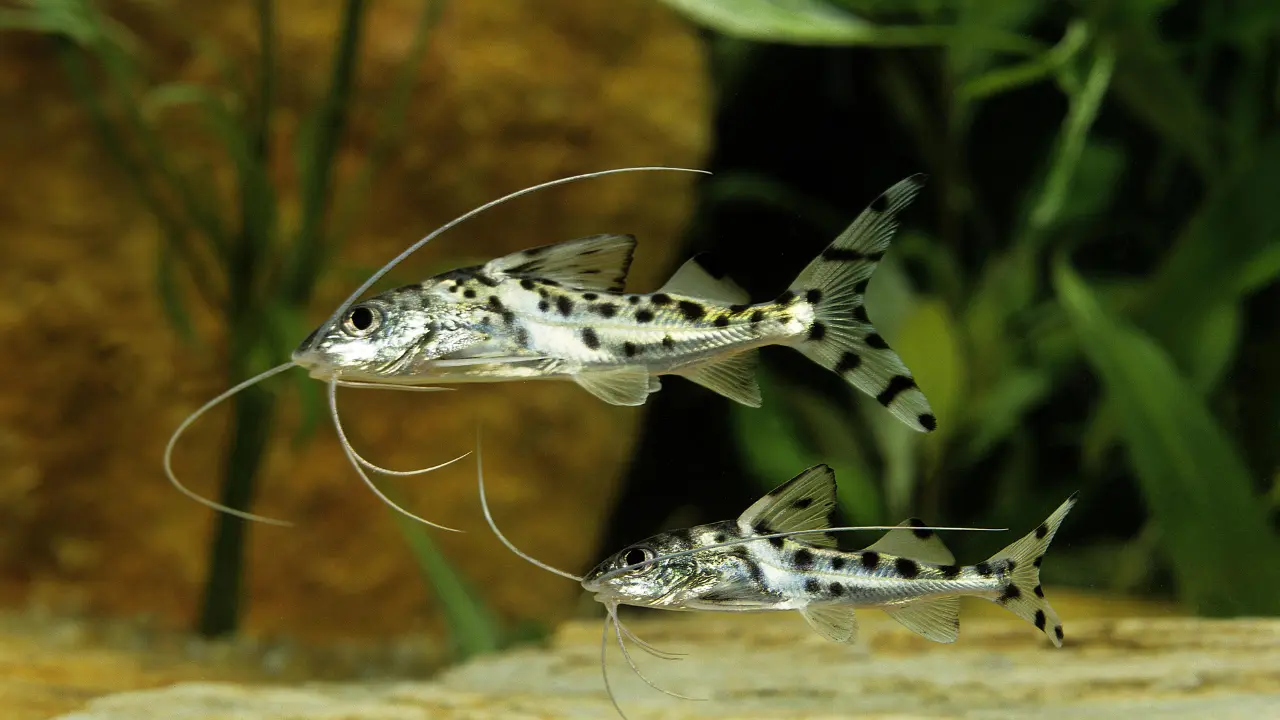
Ideally, your tank should be fairly large, and using a group of fish will increase your chances significantly. Never forget to correctly quarantine your new breeding fish, particularly if they are coming from various sources.
If you make it through that, there’s an even bigger hump in the path. These fish must spend a large portion of their life in open water to truly attain sexual maturity.
All that being said, we suggest the chances are pretty low for success. This Pictus Catfish Care Guide only gives a walkthrough on the breeding process, but the real deal requires some experience and luck. However, if you are specifically interested in breeding fish, the following are some suggestions with higher successful breeding chances.
- Guppies
- platies
- swordtails
- tetras
Pros and Cons of Pictus Catfish
| PROS | CONS |
| Striking appearance | A huge water tank required |
| Peaceful demeanor | Nocturnal nature |
| Active and Interesting | Sensitive barbel |
| Easy to care | Not Breeding Friendly |
| Cost Effective | Small in size |
FAQ’s
Q1) How big do pictus catfish get ?
Pictus catfish can get as long as 5 to 7 inches in length when fully grown. Although the size is very small its addition to your home aquarium is like none other.
Q2) How many pictus catfish should be kept together ?
Pictus catfish is a highly social fish and likes to live in a group, we suggest keeping at least 4 to 5 individuals together. Keeping them together allows them to socialize, relieve stress, and behave naturally.
Q3) What is the ideal pictus catfish water temp ?
The ideal Pictus water temperature is 72°F to 78°F Maintaining stable water parameters in the tank is crucial for this fish to survive. The pH, nitrites level, and cleanliness of water are also very important.
Conclusion
Summing it up, the Pictus fish is a combination of beauty, activity, and calm attitude. Their beautiful black and white stripes along with their barbel can charm any tank. In today’s article, we discussed all you need to know about Pictus catfish care guide and diet.
However, you should consider their excessive space requirement and nocturnal behavior. But the world is always tit-for-a-tat, and trust me this trade isn’t bad. The effort to care for this fish is nothing compared to the intriguing mystery it adds to your tank.
Still have questions? Share your thoughts with us in the comments below.

